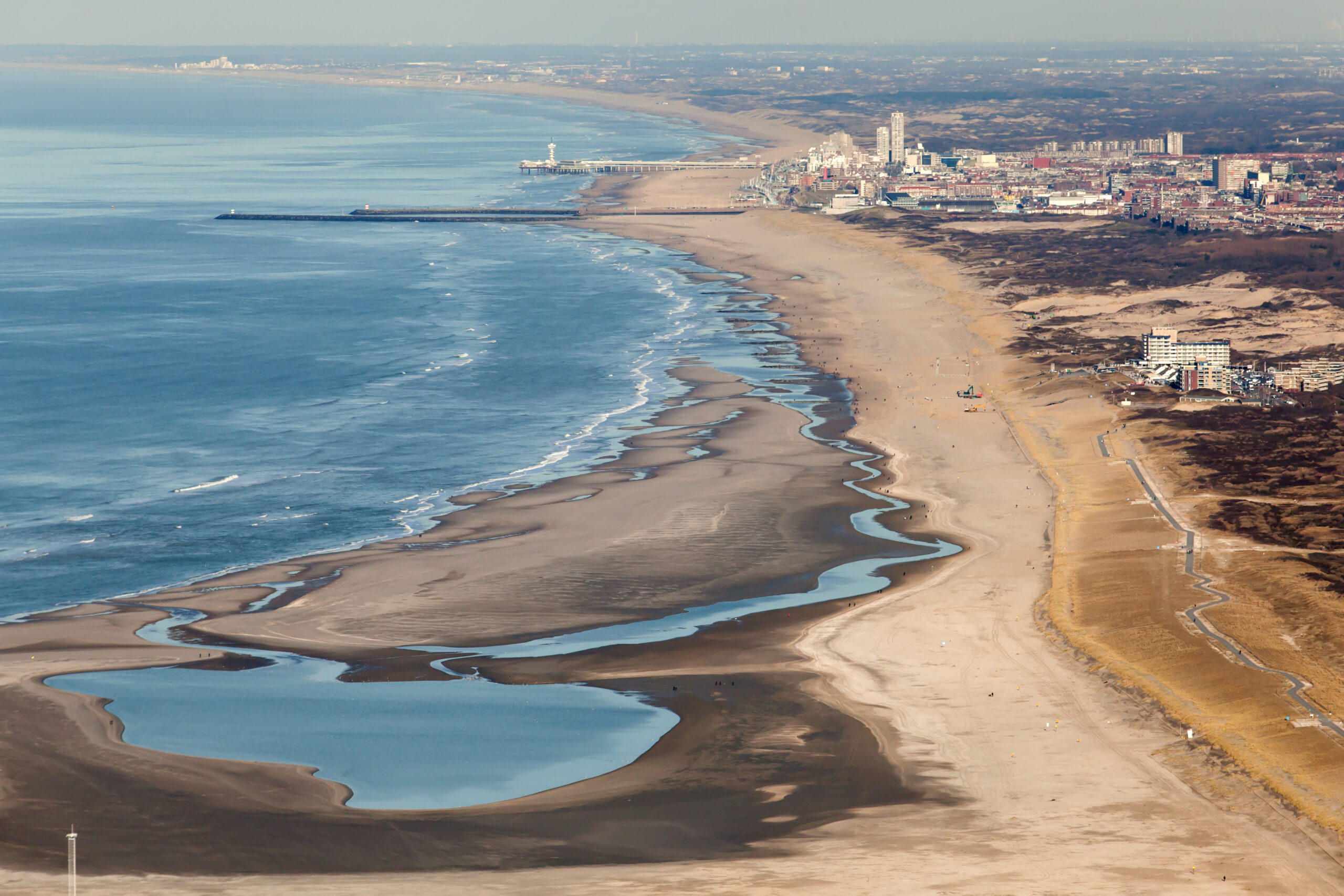The Sand Motor, an artificial peninsular-shaped sandbank on the Dutch coast near The Hague, is working: the dunes are growing fast. Largely thanks to marram grass.
This finding comes from Corjan Nolet’s study of how the Sand Motor works, for which he recently got his PhD. The peninsular was created 10 years ago as a natural alternative to standard sand replenishment methods used to shore up the dunes along the coast. Because of rising sea levels, it takes more and more sand to maintain the coastline. Constantly replenishing sand is costly and time-consuming, and the Sand Motor was thought up as an answer to that: deposit piles of sand in one go and let the wind and water spread it so the dunes grow. Building with nature, in other words. But does it really work?
Growth through sand
Yes, says Nolet with conviction. ‘This kind of passive dune formation is comparable with that elsewhere along the coast, where people actively add sand. What with the increased ecological and aesthetic value of the area, it is a successful experiment all round.’ And that is in spite of the fact that dune formation is going more slowly than expected. ‘The projected growth by 38 hectares of dunes won’t be achieved.’ Nolet focused mainly on the interaction between wind-blown sand and marram grass. Marram grass is crucial to dune formation because it fixes the sand. Nolet has documented that process precisely with new measurements. He did this using a drift sand sampler developed with colleagues from the chair group, which measured how much sand blew past it every 10 minutes. Nolet linked these measurements with the growth of the dunes and the vegetation, measured using drones. ‘Dunes with marram grass turn out to grow faster than bare dunes.’ In fact, marram grass needs sand in order to grow.
Wind
Nolet succeeded in capturing marram grass’s growth in response to sand in a formula. Marram grass grows fastest when about 30 centimetres of sand falls on the grass per season. This makes it a key plant for coastal protection. In fact, Nolet believes the safety of the Dutch coast strongly depends on the unique growth characteristics of marram grass.
‘Wind shifts much less sand than was thought’
With his measurements, Nolet has also made a significant contribution to the theory of sand transport by wind. ‘The amount of sand that is moved increases with the wind force on the ground. But the mathematical relationship is to the power of two rather than the power of three, as is often assumed. That means that wind moves much less sand than was thought.’ Nolet proved that this is partly a matter of how wet the sand is.
Overall, only a small amount of the sand from the Sand Motor actually ends up forming part of a dune. Most of the sand does land on the dunes but is then blown or washed away again.

 The Sand Motor on the coast near The Hague. Photo Rijkswaterstaat/Jurriaan Brobbel
The Sand Motor on the coast near The Hague. Photo Rijkswaterstaat/Jurriaan Brobbel 

